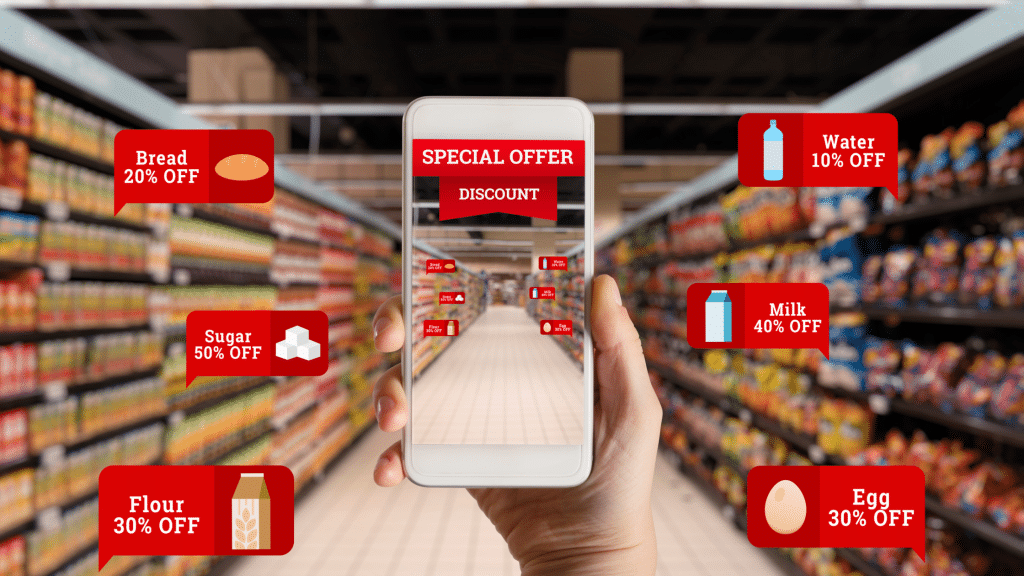Everyone loves a great deal. Using discounts and offers can be an effective strategy to attract more eyes to your product or to convert those hesitant leads that were adding and deleting items from their cart.
But, how can you offer discounts for amazon in the most strategic way? Well, that’s what Amazon promotions are about.
Promotions on Amazon catch people’s attention and can help you fast track a slow season in your business.
Let’s figure out when is the best time to use an amazon promotion, and how to make the most out of them in each case.
What are Amazon Seller Promotions?
Promotions are deals that sellers can run when they want to offer a special discount for their customers. Now, this may indicate that the goal of Amazon promotions is to increase sales. That is true, but it’s not the whole story. Amazon promotions also generate traffic.
When a user finds a great promo, chances are they’ll share their finding with friends and family. This word-of-mouth marketing could create a search boost for the promoted product. So, the true goal of promotions is to find new leads and drive conversions.
Examples of Amazon Deals for My Products
Some examples of what Amazon seller promotions can look like include:
Percentage Discounts
Percentage discounts reduce the price by a specific rate. For example, if you sell a $50 product with a 20% discount, buyers will pay $40. This type of discount is straightforward and can appeal to budget-conscious shoppers.
To use this effectively, highlight the savings clearly in your product listings and marketing materials. For example, “Save 20% today!” makes the discount noticeable and appealing.
Buy One, Get One (BOGO) Offers
BOGO offers lead customers to purchase more by providing an extra item for free or at a reduced price. For instance, “Buy one, get one free” on a $30 item means customers get two items for $30 instead of $60.
This can help increase the quantity sold. Additionally, you can tailor BOGO offers to different needs, such as “Buy one, get one 50% off,” which still incentivizes extra purchases while managing costs.
Limited-Time Discounts
Limited-time discounts create a sense of urgency, which encourages customers to click the “Add to cart” button sooner than later. For example, offering a “20% off for the next 24 hours” deal can drive immediate sales.
These discounts are particularly effective during promotional events or product launches. You can make the deal even more appealing by using countdown timers on your product pages to visually emphasize the limited-time nature of the offer.
Volume Discounts
Volume discounts reward customers for buying in bulk. For example, “Save 10% when you buy three or more” encourages shoppers to purchase multiple items at once.
This type of discount is useful for products that people often buy in larger quantities, like office supplies or non-perishable goods.
Highlighting these deals on product pages and in search results can attract customers who are looking for the best value for their money.
Prime Exclusive Deal
These are offers available to Amazon Prime members. Now you won’t reach all Amazon customers, but that’s the point.
Prime members are known to spend more on Amazon. That means you’ll advertise to users who are more likely to make a purchase. It’s also a unique strategy to take advantage of during Amazon Prime Day.
Coupon Codes
Coupon codes are alphanumeric codes that customers enter at checkout to receive a discount. For example, a code like “SAVE15” might give a 15% discount on all purchases over $50.
Amazon coupons can be easily shared through email marketing or social media campaigns. All you need to do is make sure to promote your coupon codes across different channels and remind customers to use them before they expire.
Social Media Promo Code
As the name states, this Amazon promotion is designed to work best on social media sites. Its goal is to boost awareness off-Amazon.
This campaign also requires redeemable Amazon codes, which users need to earn the promotion’s benefit. It also requires specific pricing and time parameters.
With careful planning, a social media promo code will drive new traffic to your listings. Plus, you’ll also increase customer awareness.
How to Run Amazon Promotions
-
- Log In to Seller Central. Go to Seller Central and log in with your seller account information.
- Go to Promotions. In the main menu, hover over “Advertising” and click “Promotions.”
- Select Your Promotion Type. Choose the promotion type you want to create, such as “Percentage Off” or “Free Shipping.”
- Start a New Promotion. Click “Create” next to your chosen promotion type.
- Enter Basic Information.
- Internal Description. This is for you to keep track of your promotions. Name it something descriptive, like “Summer Sale 2024.”
- Conditions. Set the rules for the promotion, such as the minimum quantity a customer needs to buy or which products are included.
- Discount Amount. Specify how much discount you are offering, such as 15% off or $10 off.
- Claim Code (optional). Create a unique code that customers will use to get the discount. For example, “SUMMER2024.”
Configure Additional Settings
- Advanced Options. These include extra settings like:
- Start and End Date. Decide when your promotion will start and end. For example, from June 1 to June 30.
- Customer Eligibility. Choose if the promotion is for everyone or just certain customers.
- Combining Promotions. Decide if customers can use this promotion with other discounts or offers.
- Review and Submit. Check all the details to make sure they are correct, then click “Submit” to create your promotion.
- Monitor and Adjust Your Promotion. After your promotion starts, keep an eye on how it’s doing in Seller Central.
When NOT to use Amazon Promotions
There are times when using Amazon promotions isn’t the best idea. Knowing when to avoid them can help you make better decisions and protect your profits and brand reputation.
Low profit margins
Promotions revolve around discounts, which can cut into your profits. If you’re barely making money on your sales, offering promotions might lead to financial losses.
Before launching any promotion, check your costs carefully to ensure you can afford the lower price without hurting your overall earnings.
Low stock levels
Amazon promotions can lead to a sudden increase in sales. However, if you don’t have enough stock to meet the increased demand, you risk running out of products. This can frustrate customers and hurt your seller rating due to unfulfilled orders or delayed shipping.
Make sure you have enough inventory to handle a potential surge in sales before considering any promotion.
New, untested products
Customers often rely on reviews and ratings to make purchasing decisions. If your product doesn’t have many reviews or a solid track record yet, relying on promotions to drive sales might not be effective.
Instead of focusing on promotions, work on building a strong reputation for your product through excellent customer service and reviews. Once you gain some traction, promotions will be more effective.
Unoptimized product listings
Vague product descriptions, poor quality images or poorly chosen keywords lead to poor sales. In such cases, Amazon promotions are unlikely to yield positive results. Customers need to be convinced that your product is worth buying, and a well-crafted product listing can help with that.
Fierce competition
In a highly competitive market, promotions might lead to a race to the bottom, where competitors continuously undercut each other’s prices. This not only cuts your profit margins but can also devalue your product in the eyes of consumers.
Instead of engaging in price wars, focus on making your product stand out through unique features, better quality, and exceptional customer service.
Related content: Amazon Pricing Strategy
Amazon Lightning Deals vs Discounts
Amazon lightning deals are short-term promotions where a limited number of discounted products are offered for a specified period―usually a few hours.
Lightning deals are highly visible on Amazon’s website and are often accompanied by a countdown timer, creating a sense of urgency for shoppers. Such discounts are best suited for sellers looking to quickly move inventory or to promote seasonal items.
Also, note that only Pro sellers qualify for lightning deals. Check if you have the two options or if Amazon promo codes are your only resource.
On the other hand, Amazon promotions allow brands to create customized discounts or shopping incentives. Here are a few benefits of promos over lightning deals on Amazon:
- Promotions can run for longer periods than lightning deals, ranging from a few days to several weeks.
- Sellers have more control over the terms and conditions of their promotions, such as discount percentages, minimum purchase requirements, and eligible products.
- Amazon promotions are ideal for sellers who want to offer more flexibility in their discounts, or to target specific niches.
Final Thoughts
Customers love Amazon promotions, and brands should capitalize on this.
Promotions are not only about boosting sales, but also about building strong relationships with customers and reaching larger audiences. Plus, they can also help you stand out from competing brands by presenting your product as the real deal.
Combined with the right advertising strategy, these promotions can be an efficient way to reach short term goals while also building a strong foundation for long term growth.
Authors


Esteban Muñoz is a content writer at AMZ Advisers, with several years’ experience in digital marketing and e-commerce. Esteban and the AMZ Advisers team have been able to achieve incredible growth on Amazon for their clients by optimizing and managing their accounts, and creating in-depth content marketing strategies.




